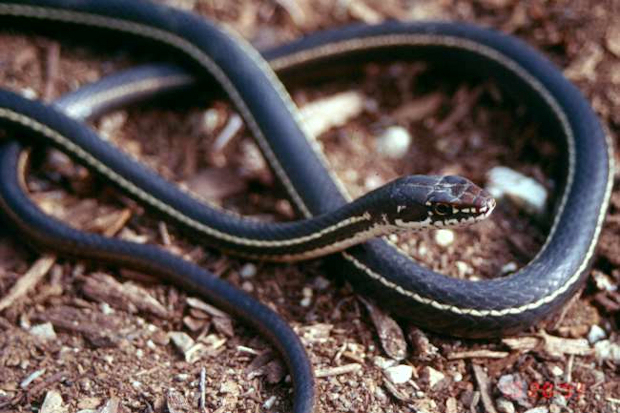Reptiles of Eaton County
Great Basin Fence Lizard


(Sceloporus occidentalis lonipipes)
A very common lizard in most habitats, it is often seen on fences, rocks, logs, and on the ground in all but the coldest winter months. It is light gray to almost black above, with brilliant metallic-blue throat and belly sides (slightly paler in females), and spiny scales. It is quite active, basking in the sun and feeding on small arthropods. The males exhibit a fascinating “push-up” behavior for courtship and defense. Total length can reach about six inches.
Photos by Chuck Haznedl
Side-blotched Lizard

(Sceloporus occidentalis lonipipes)
Note the large black splotch behind the front legs which gives this little guy his common name.
Photo by Chuck Haznedl
Western Whiptail Lizard
California King Snake
Southern Alligator Lizard
Striped Racer
Gopher Snake
Garter Snake
Pacific Rattlesnake
(Crotalus viridis)
This is the only dangerously venomous snake in coastal Los Angeles County. It has somewhat diamond-shaped blotches down the back, each outlined in lighter scales. It is easily identified by the presence of rattles on a blunt tail, and by the broad head with a narrow neck, creating a trianglular shape.
Venomous & Non-Venomous Snakes

The head and neck of the non-venomous gopher snake are nearly the same width. Bulges at the base of a rattlesnake’s head hold venom glands, forming a triangular shape.
Caution: this comparison is true for snakes in Eaton Canyon, but not necessarily other parts of the world or even this country. Never handle a snake in the wild!
Photos by Chuck Haznedl








